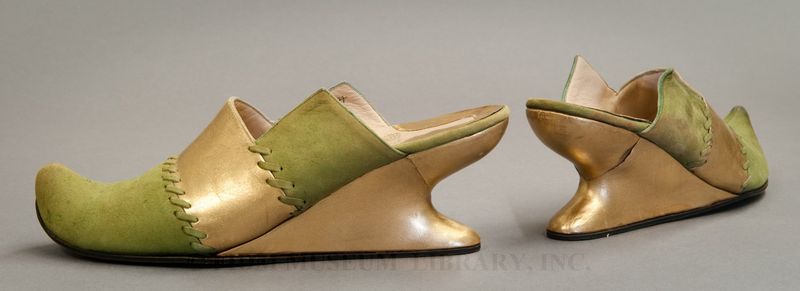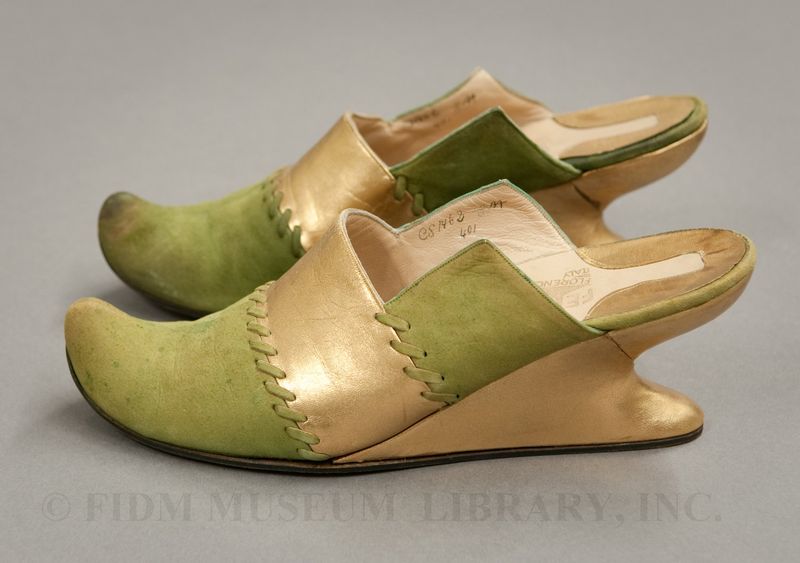Ferragamo
Though Ferragamo shoes are closely associated with Italian luxury and chic, the roots of the company can be traced to southern California. Company founder Salvatore Ferragamo was born in Italy in 1898, but immigrated to the United States at age 14. Following in the footsteps of his older brothers, he first worked in a Boston shoe factory before making his way to Santa Barbara around 1914. With his brothers, Ferragamo opened a shoe repair shop, though he was soon creating custom shoes for the actors and films associated with the American Film Company, a silent-film studio based in Santa Barbara. In 1923, Ferragamo moved to Los Angeles and opened the Hollywood Boot Shop, where he designed custom shoes for famous customers, including Pola Negri, Gloria Swanson and others. In 1927, Ferragamo returned to Italy and established the company that bears his name today.
 Mules Ferragamo 1944-45 Museum Purchase 2004.5.38AB
Mules Ferragamo 1944-45 Museum Purchase 2004.5.38AB
Though Ferragamo created shoe designs that both reflected and forecast fashion trends, his primary concern related to the fit and comfort of shoes. His 1957 autobiography, Shoemaker of Dreams, reads like a prescription for foot health, interspersed with anecdotes about his career. Though the visual appeal of Ferragamo's shoes clearly demonstrates his creativity, he considered his life's work "to learn to make shoes that always fit and the refusal to put my name to any that do not fit."1 Ferragamo condemned poor fitting shoes, declaring that "when you put your feet into an ill-fitting pair of shoes you imprison them in unnatural surroundings."2 To ensure that his shoes were comfortable, Ferragamo developed a new system of sizing derived from his studies of foot anatomy. He also created individual foot molds for frequent customers.
Ferragamo's insistence on comfort did not lessen the aesthetic appeal of his designs. Ferragamo's most iconic shoes of the 1930s and early 1940s feature a thick wedge heel, often made of cork. Ferragamo believed that cork had the added benefit of making "the feet feel as if they are riding on a cushion."3 After World War II, Ferragamo streamlined the chunky wedge, creating what he called the "F-heel," which you can see in the FIDM Museum Ferragamo mules. This heel was a sculptural and elegant evolution of the wedge, created from two pieces of hand-carved wood. The upturned toe was a recurring shape in Ferragamo's shoe designs, appearing as early as 1938 and possibly derived from shoes he created for the 1924 Douglas Fairbanks film The Thief of Baghdad.
1 Ferragamo, Salvatore Shoemaker of Dreams. New York: Crown Publishers, 1957: 1. 2 Ibid: 73. 3 Ibid: 145.
